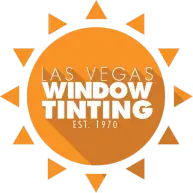
Window tinting enhances the look, comfort, and UV protection of your vehicle or home. But when it comes to cleaning those sleek, shaded panes, not all glass cleaners are created equal. One of the most recognizable names in glass cleaning is Windex, but is it really safe for tinted windows?
What Is Windex?
Windex is a household name known for its streak-free shine on glass surfaces. It’s a go-to product for millions of people when it comes to cleaning mirrors, windows, and even car windshields. The classic blue formula contains ingredients like water, solvents (such as isopropanol), and ammonia-D, a version of ammonia that’s particularly effective at cutting through grease and grime.
That brings us to the critical point—ammonia.
The Problem with Ammonia on Tinted Windows
Ammonia is a powerful cleaning agent, but it’s also a tint killer. Most window tints, especially aftermarket films, are sensitive to harsh chemicals. Here’s why Windex (especially the standard version with ammonia) can be bad for tinted windows:
1. Ammonia Breaks Down Window Tint Film
Ammonia can gradually deteriorate the adhesive that binds the tint to the glass. This leads to:
- Bubbling
- Peeling
- Discoloration
- Reduced UV protection
2. Fading and Color Shifts
Over time, using Windex on tinted windows can cause the film to fade or change color. This not only affects the appearance but can also reduce the effectiveness of heat and glare reduction.
3. Damage to Factory vs. Aftermarket Tint
Factory-tinted windows are generally tinted within the glass itself, not by applying a film. These are less likely to be damaged by Windex, but aftermarket film-tinted windows are much more vulnerable.
How to Identify If Your Windex Is Safe
Windex has multiple formulations. The classic blue bottle usually contains ammonia, but some newer versions do not. Here’s what you need to look for:
- Read the label. If it lists ammonia or ammonia-D, it’s a no-go for tinted windows.
- Look for ammonia-free versions. Products like Windex Ammonia-Free Glass Cleaner or Windex Vinegar Multi-Surface are safer alternatives.
Safer Alternatives to Windex for Tinted Windows
If you want to keep your tinted windows clean and damage-free, here are some Windex alternatives you can use with confidence:
1. Ammonia-Free Glass Cleaners
Several brands (including Windex itself) offer ammonia-free options designed for tinted surfaces.
2. DIY Cleaning Solution
Make your own tint-safe cleaner:
- Mix one part distilled white vinegar
- With one part distilled water
- Add a drop of dish soap (optional)
Use with a soft microfiber cloth for best results.
3. Specialized Tint Cleaners
Automotive stores often carry cleaners specifically formulated for tinted windows. These are a bit more expensive but are tailored to maintain the lifespan and clarity of your tint.
How to Clean Tinted Windows Safely
Cleaning technique matters just as much as the cleaner itself. Here’s how to clean tinted windows the right way:
- Choose the right time: Clean when the glass is cool—avoid direct sunlight.
- Use a microfiber cloth: Paper towels can scratch the film.
- Spray on the cloth, not the glass: This prevents cleaner from seeping into edges where it can loosen tint film.
- Wipe gently in straight lines: Avoid circular motions which can create streaks.
- Dry thoroughly: Prevents spotting and film damage.
What If You’ve Already Used Windex?
If you’ve accidentally used Windex on your tinted windows once or twice, don’t panic. A few occasional uses might not cause immediate damage, especially if the tint is high-quality. However, regular use can shorten the life of the tint, so it’s best to stop now and switch to a safer cleaner moving forward.
Look for signs of damage:
- Bubbling or warping
- Peeling around the edges
- Hazy or dull spots
If any of these symptoms appear, you may need to replace the window film.
Expert Recommendation
Professional tint installers almost universally warn against using Windex with ammonia on tinted windows. Many even void warranties if ammonia-based products are used. Their advice?
Stick to ammonia-free cleaners only.
And if you’re unsure, bring your vehicle or glass to a specialist. They can clean and protect your tint properly, extending its life and maintaining its performance.
Final Verdict: Is Windex Bad for Tinted Windows?
Yes—traditional Windex that contains ammonia is bad for tinted windows, especially if they are aftermarket films. The ammonia can break down the tint’s adhesive, cause discoloration, and reduce its lifespan.
However, not all Windex products are created equal. The ammonia-free versions can be safe when used with proper techniques and tools. The key is to read the label, know your tint type, and clean smartly.
Takeaway Tips:
- Avoid Windex with ammonia on tinted windows.
- Choose ammonia-free alternatives or make your own solution.
- Always use a soft cloth and gentle cleaning methods.
- If in doubt, consult a professional.
Protect your tint investment by keeping harsh chemicals away. Your windows—and your wallet—will thank you.
